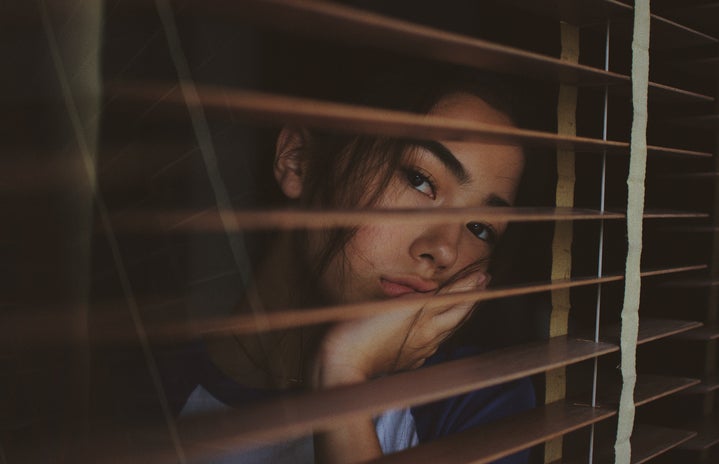As the leaves finish changing colors and start falling off the trees, winter begins to close in. It throws its dark, cold veil over everything, and it’s normal to begin feeling more down than usual. Sometimes, this lack of motivation and sadness during the colder months can get pretty serious, and can turn into seasonal depression, also known as seasonal affective disorder (SAD).
According to the National Institute of Mental Health (NIMH), SAD is a type of depression that comes during the changing seasons. It can display itself with symptoms similar to those of depression, but there are also some symptoms unique to SAD. Symptoms of depression can include persistent feelings of sadness and hopelessness, loss of interest in hobbies, fatigue, and feeling slowed down. Symptoms of SAD can also include oversleeping, overeating, and feeling socially withdrawn.
SAD is different from feeling the stress and anxiety of the holidays. Instead, it’s caused by changes in daylight hours. Johns Hopkins Medicine says that shorter days and more hours of darkness causes more melatonin to be made in the brain. This “sleep-related hormone” makes you feel down and less motivated.
What can you do about seasonal depression? You might not be able to move somewhere sunnier, and you definitely can’t change the weather conditions where you live. Something you can do is light therapy. The NIMH describes a very bright light box that is 20 times brighter than regular indoor light fixtures, and that filters out the harmful UV light. This box is safe for most to sit near for 30 to 45 minutes, and is meant to bring that bright light back into the lives of those affected by a lack of sunlight in the winter months.
The NIMH also describes psychotherapy, otherwise known as talk-therapy or counseling, as a way to help change unhelpful thoughts during depressive times. Cognitive behavioral therapy (CBT) is a type of psychotherapy that has, in some cases, been curated for people with SAD. This can be group therapy sessions that pinpoint negative thoughts or feelings toward the changing seasons and replace them with positive ones. It can also look like finding fun things to do that involve going outside to offset the loss of interest and motivation that comes with the dreary winter. The NIMH says that “when researchers directly compared CBT-SAD with light therapy, both treatments were equally effective.”
A few more small things you can do to improve your mood in the midst of seasonal depression, according to the Cleveland Clinic, are getting antidepressants from your doctor, taking a vitamin D supplement, trying to spend more time outdoors, and eating nutritious meals.
Overall, seasonal depression is definitely real, but not impossible to take care of. Try your best to be easy on yourself and accept that what you’re feeling is not your fault. You are not alone, and there are probably many people around you that are going through the same thing. Confide in your friends and family, find things to do that interest you, and take care of your body. The changing of seasons is inevitable, and for some people, so is seasonal depression. Remember that it does not control you, and there are many things you can do to help you feel like the winter isn’t as dreadful as it seems.


